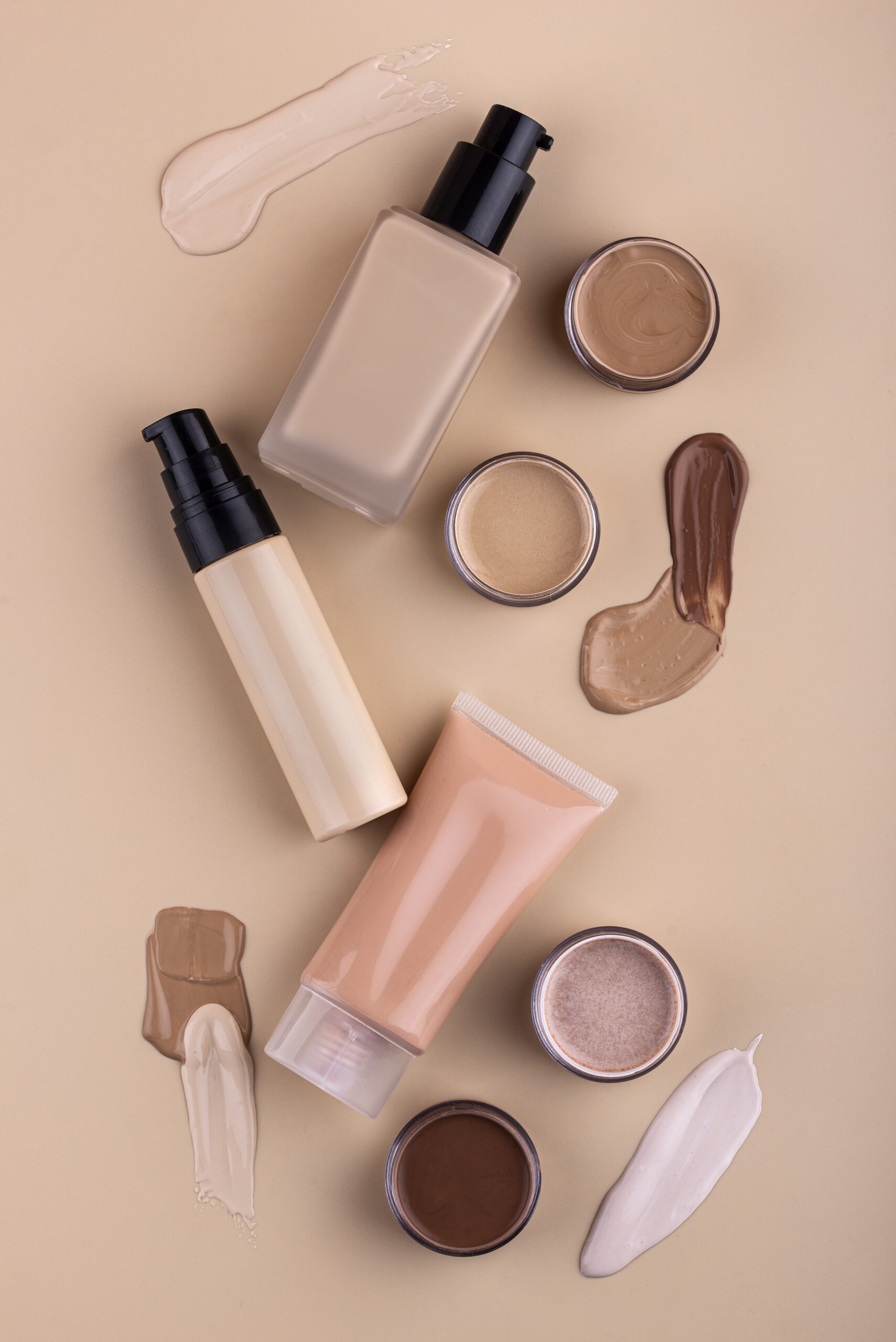Physical Address
304 North Cardinal St.
Dorchester Center, MA 02124
Physical Address
304 North Cardinal St.
Dorchester Center, MA 02124

To choose the right foundation, start by identifying your skin type—oily, dry, combination, or sensitive. Oily skin benefits from matte, oil-free formulas to control shine, while dry skin thrives with hydrating, dewy options. Combination skin needs a balanced approach, and sensitive skin requires hypoallergenic, fragrance-free products to minimize irritation. This step ensures your foundation enhances your natural beauty without causing issues.
Shade matching is key for a flawless look. Test foundations on your jawline in natural light to find a match that blends seamlessly. Consider your undertones—warm (yellow/golden), cool (pink/blue), or neutral (a mix)—to avoid mismatches. This process, detailed in a foundation shade matching guide, helps achieve a natural finish.
Avoid pitfalls like choosing the wrong formula (e.g., matte for dry skin) or shade (too light or dark), which can lead to a cakey look or irritation, particularly for sensitive skin. Proper skin prep, like moisturizing and priming, and using the right tools, such as brushes or sponges, can enhance application and longevity.
An often-overlooked aspect is adjusting your foundation shade for seasonal changes in skin tone, such as getting darker in summer or lighter in winter. This ensures your makeup looks natural throughout the year, as highlighted in seasonal skin care tips.

Foundation is the cornerstone of a makeup routine, creating a smooth canvas for further application. However, with countless options available, choosing the right one can feel overwhelming. This guide, optimized for the keyword “how to choose the right foundation for your skin type,” breaks down the process into manageable steps, ensuring you find a product that complements your skin and enhances your natural beauty. It also addresses secondary keywords like “best foundation for sensitive skin” and “foundation shade matching guide,” offering comprehensive insights.
The first step is identifying your skin type, as it dictates the ideal foundation formula. Research suggests the following categories:
Understanding your skin type, as detailed in competitor examples, ensures the foundation works harmoniously, avoiding issues like breakouts or dryness.
Foundation formulas vary, and selecting the right one enhances both comfort and appearance. Here’s a breakdown, informed by competitor insights:
| Formula Type | Best For | Coverage Level | Finish |
|---|---|---|---|
| Liquid Foundation | All skin types, especially dry | Light to Full | Matte to Dewy |
| Powder Foundation | Oily, combination | Light to Medium | Matte |
| Cream Foundation | Dry, normal | Medium to Full | Dewy |
| Stick Foundation | Normal to dry, on-the-go use | Medium to Full | Natural to Dewy |
| Tinted Moisturizer/BB Cream | All, minimal coverage needs | Sheer | Natural, Luminous |
For example, competitor articles highlight liquid foundations like Inglot All Covered Foundation for versatility, while cream foundations suit dry skin for special occasions, as seen in Artdeco Rich Treatment Foundation.
Coverage and finish are crucial for achieving your desired look:
Competitor examples, like Note Cosmetics Foundation, emphasize matching coverage to lifestyle, ensuring comfort and longevity.
Shade matching is vital for a seamless blend, and competitor guides stress testing on the jawline under natural light. Consider undertones:
The process, detailed in a foundation shade matching guide, involves swatching and letting the shade settle to ensure it disappears into your skin. Seasonal changes, as noted in seasonal skin care tips, may require shade adjustments, ensuring a natural look year-round.
To avoid common mistakes, follow these tips, inspired by competitor strategies:
Avoid errors like using matte foundations on dry skin, which can look cakey, or failing to prep skin, which affects blendability, as highlighted in foundation application tips.
For those with sensitive skin, the keyword “best foundation for sensitive skin” is crucial. Choose hypoallergenic, fragrance-free options with soothing ingredients like aloe or chamomile, such as Fresh Nude Foundation. Competitor examples emphasize minimizing irritation, ensuring comfort and a healthy glow.
Choosing the right foundation involves understanding your skin type, matching shades, and avoiding common mistakes, with considerations for seasonal changes and sensitive skin. By following this guide, you’ll achieve a flawless, natural look, boosting confidence and comfort. Invest time in exploring options, as competitor insights suggest, to find your perfect match.
You can read this blog for Top 15 Natural Ingredients for Glowing Skin and Hair (Backed by Science)